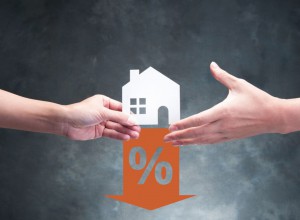The Reserve Bank of Australia (RBA) has announced its decision on the official cash rate for December, with the board deciding to hold interest rates for the time being, amid speculation the next rate reduction will be in February 2020. 
After three rate cuts since June, the average Australian mortgage holder is now $127 per month better off, according to new research from RateCity.com.au.
This is based on a big four customer with a discounted variable rate and a $400,000 loan with 25 years remaining.
If that borrower chose to invest this back into their mortgage, by leaving their repayments the same, they could be more than $24,000 ahead over the remainder of their loan, and pay it off 2 years and 3 months sooner.
Here’s what the experts have to say:
Martin Lakos ( Macquarie) comment:
The RBA kept the official cash rate on hold at 0.75% at its latest meeting.
While the RBA’s final meeting for 2019 delivered no surprises in deciding to keep official rates on hold at 0.75%, 2019 was a year where domestic economic growth waned and inflation remained weak and despite stable unemployment consumer spending was also subdued impacting retail spending and car sales.
Despite house prices starting to rebound residential construction remains soft, however building approvals have stabilised and non-residential construction rose strongly in the 3rd quarter.
Macquarie forecasts growth for Australia to gradually recover towards the end of 2020, however the RBA may cut again if the jobs market softens from here.
Source: Macquarie
Comments from the RBA:
At its meeting today, the Board decided to leave the cash rate unchanged at 0.75 per cent.
The outlook for the global economy remains reasonable.
While the risks are still tilted to the downside, some of these risks have lessened recently. 
The US–China trade and technology disputes continue to affect international trade flows and investment as businesses scale back spending plans because of the uncertainty.
At the same time, in most advanced economies unemployment rates are low and wages growth has picked up, although inflation remains low.
In China, the authorities have taken steps to support the economy while continuing to address risks in the financial system.
Interest rates are very low around the world and a number of central banks have eased monetary policy over recent months in response to the downside risks and subdued inflation.
Expectations of further monetary easing have generally been scaled back.
Financial market sentiment has continued to improve and long-term government bond yields are around record lows in many countries, including Australia. Borrowing rates for both businesses and households are at historically low levels.
The Australian dollar is at the lower end of its range over recent times.
After a soft patch in the second half of last year, the Australian economy appears to have reached a gentle turning point.
The central scenario is for growth to pick up gradually to around 3 per cent in 2021. 
The low level of interest rates, recent tax cuts, ongoing spending on infrastructure, the upswing in housing prices and a brighter outlook for the resources sector should all support growth.
The main domestic uncertainty continues to be the outlook for consumption, with the sustained period of only modest increases in household disposable income continuing to weigh on consumer spending.
Other sources of uncertainty include the effects of the drought and the evolution of the housing construction cycle.
The unemployment rate has been steady at around 5¼ per cent over recent months.
It is expected to remain around this level for some time, before gradually declining to a little below 5 per cent in 2021.
Wages growth is subdued and is expected to remain at around its current rate for some time yet.
A further gradual lift in wages growth would be a welcome development and is needed for inflation to be sustainably within the 2–3 per cent target range.
Taken together, recent outcomes suggest that the Australian economy can sustain lower rates of unemployment and underemployment. 
Inflation is expected to pick up, but to do so only gradually.
In both headline and underlying terms, inflation is expected to be close to 2 per cent in 2020 and 2021.
There are further signs of a turnaround in established housing markets.
This is especially so in Sydney and Melbourne, but prices in some other markets have also increased recently.
In contrast, new dwelling activity is still declining and growth in housing credit remains low.
Demand for credit by investors is subdued and credit conditions, especially for small and medium-sized businesses, remain tight.
Mortgage rates are at record lows and there is strong competition for borrowers of high credit quality.
The easing of monetary policy this year is supporting employment and income growth in Australia and a return of inflation to the medium-term target range.
The lower cash rate has put downward pressure on the exchange rate, which is supporting activity across a range of industries.
It has also boosted asset prices, which in time should lead to increased spending, including on residential construction. 
Lower mortgage rates are also boosting aggregate household disposable income, which, in time, will boost household spending.
Given these effects of lower interest rates and the long and variable lags in the transmission of monetary policy, the Board decided to hold the cash rate steady at this meeting while it continues to monitor developments, including in the labour market.
The Board also agreed that due to both global and domestic factors, it was reasonable to expect that an extended period of low interest rates will be required in Australia to reach full employment and achieve the inflation target.
The Board is prepared to ease monetary policy further if needed to support sustainable growth in the economy, full employment and the achievement of the inflation target over time.
Source: www.rba.gov.au
Comments from the Finder.com.au RBA Survey:
RBA Survey: Brisbane and Melbourne picked as top cities to buy property
- Experts have encouraged those hunting for good value for their property dollar to look at Brisbane and Melbourne, according to Finder.

- In the latest Finder RBA Cash Rate Survey™, experts and economists weighed in on future cash rate moves and economic indicators, including wage growth and housing affordability.
- Almost a quarter said they’d buy in Brisbane or Melbourne (22% each) if they were to purchase property today.
- Third place was a tie between Canberra (13%) and Sydney (13%), while 9% say Hobart would be a good place to buy.
- Perth and Adelaide were at the bottom of the list, with only 4% of experts tipping the cities to be a wise property investment.
Best capital city to purchase property, December 2019

- Graham Cooke, insights manager at Finder, said the biggest surprise was where Australia’s largest city landed.
- “While Melbourne and Brisbane are strong candidates for the most promising property market in Australia, it is a bit stunning to see Sydney perform relatively poorly.”
- Cooke said the results are also a good reminder for investors to look beyond their local area.
- “The state you live doesn’t need to be the state where you buy. With many Sydneysiders grappling with housing affordability, rentvesting could be the way to go.”
Experts say First Home Buyer Scheme will have ‘no significant impact’
- The Federal Government finally announced the launch of one of its key election promises: a mortgage guarantee scheme for first home buyers.
- The scheme will guarantee mortgages for 10,000 first home buyers who have only saved a 5% deposit, effectively helping them buy sooner without paying lenders mortgage insurance premiums.
- Economists were sceptical of the scheme, with the vast majority (90%, 19 respondents) saying it would have no significant impact on the market.

- Cooke said aside from the small number of borrowers who would get the aid, the property value caps are problematic, especially in Sydney.
- “The Government’s scheme limits the purchase price of Sydney properties to $700,000, which to be honest, is a joke.
- “Not many properties will qualify for this scheme – some apartment buyers may qualify, but not many houses are available for below that price.
- “With the average regional home in Australia needing to fall below a $350k window to qualify, even options for those outside cities will be limited.
- “Additionally, borrowing with a 5% deposit can end up being a lot more expensive in the long run. This could cost you over $90,000 in extra interest over the full term of a home loan at the big four’s standard variable rate.”
- The scheme will be administered through the National Housing Finance and Investment Corporation (NHFIC) in partnership with lenders and is intended to make low deposit home loans cheaper.
- To be eligible for the scheme you must be purchasing a property valued at or below the following thresholds:
Property value caps
| State/Territory | Capital city/regional centre* |
Rest of state |
| NSW | $700,000 | $450,000 |
| VIC | $600,000 | $375,000 |
| QLD | $475,000 | $400,000 |
| SA | $400,000 | $250,000 |
| WA | $400,000 | $300,000 |
| TAS | $400,000 | $300,000 |
| ACT | $500,000 | $500,000 |
| NT | $375,000 | $375,000 |
*A regional centre is defined as a city
with a population above 250,000,
such as Newcastle, Wollongong
or Geelong.
Cash rate holds, 66% predict cut in February 2020
- The Reserve Bank of Australia (RBA) today announced a hold on the cash rate at 0.75%, an outcome accurately predicted by nearly all experts (97%, 32/33) in the Finder RBA Cash Rate Survey.

- While nearly all predicted the hold, two-thirds (66%, 22/33) expect the cash rate to drop to 0.50% in February 2020.
- Cooke said the next move – whenever it happens is virtually guaranteed to be a cut – with 30 out of 33 experts (90%) forecasting the next movement as an easing.
- Julie Toth of the Australian Industry Group said in the absence of tax reform, cuts are one of the only moves the RBA can make.
- “Australia’s economy is failing to accelerate (again) in 2019-20.
- “Non-mining business investment remains especially weak, but it is sorely needed to boost our productivity growth and real incomes for all.
“In the absence of meaningful tax reform and micro-economic reform, another rate cut probably won’t help much, but it is the only response that the RBA can offer,” Toth said.
Source: www.rba.gov.au
from Property UpdateProperty Update https://propertyupdate.com.au/experts-comment-on-the-rba-december-interest-rate-decision-video/


No comments:
Post a Comment